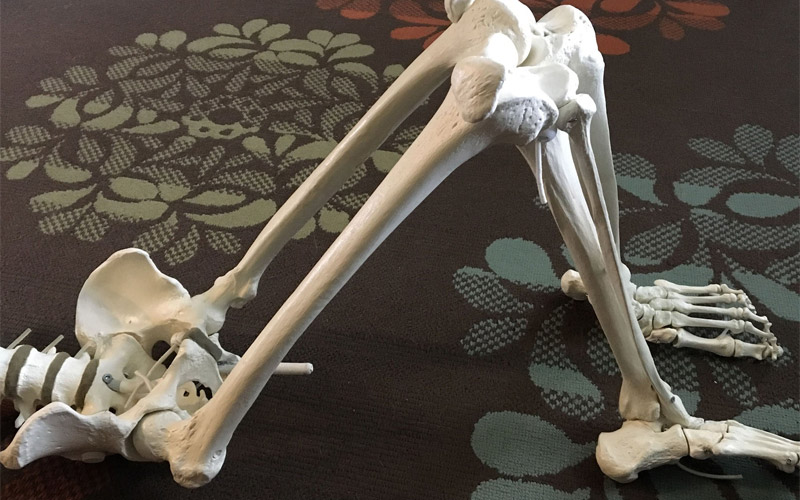Hip flexion happens every time you step, squat, sit, and revolve on a bike. Another way to describe this is when the knee comes toward the chest. A technical definition might say hip flexion happens when the angle between your femur and trunk decreases. Any way you define, describe, and demonstrate it, it’s an intuitive, yet complex movement to perform. Let’s simplify for personal trainers understanding hip flexion and the muscles associated with accomplishing it.
Not Rocket Science, but Exercise Science
The better you understand anatomy and biomechanics the more effectively you can program exercise programs for clients who need correction and/or to restore balance between the right and left sides of the body. There are 11 muscles that flex the hip joint. Each of these muscles also has other functions for movement.
For example, tensor fasciae latae also internally rotates the hip and abducts it. Whereas sartorius abducts but externally rotates the hip. The muscles in the human body all overlap each other in their abilities, making it the machine of many movements that it is.
Pretty cool, right?!? And here’s something that’s just weird – adductor magnus and gluteus medius are both able to flex the hip and extend it! What!?! We’ve named them each as ONE muscle, but they actually have different sections to them.
When improving knowledge of anatomy and biomechanics you gotta start somewhere, so how about with a motion that we all do every time we sit, squat, lunge, and step? Hip Flexion.
Review the muscles, analyze the motions, and then create stretches and exercises.
Understanding Hip Flexion Muscles
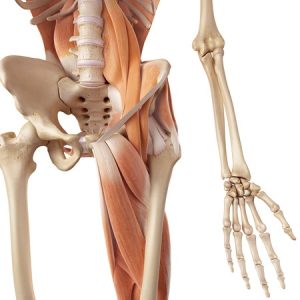
There are 11 muscles involved in hip flexion. The amount of activity of each muscle changes depending on how much flexion and whether the femur is in neutral, abducted, adducted, internally rotated or externally rotated.
THE MUSCLES INVOLVED ARE:
Psoas Major
Iliacus
Tensor fasciae latae
Sartorius
Rectus femoris
Gluteus medius (anterior fibers)
Gluteus minimus
Adductor longus (assists)
Pectineus (assists)
Adductor brevis (assists)
Adductor magnus (assists)
Review the muscle attachments in the article Hip Flexor Muscles and Anatomy for Personal Trainers to understand how each hip flexor muscle contributes to motion. Notice how each one has unique attachments. Then, consider the other movements each of the hip flexors is capable of…
Hip Flexion and Internal Rotation
Gluteus medius (anterior fibers)
Gluteus minimus
Tensor fasciae latae
Adductor longus (assists)
Pectineus (assists)
Adductor brevis (assists)
Adductor magnus (assists)
Hip Flexion and External Rotation
Psoas Major
Iliacus
Sartorius
Hip Flexion and Abduction
Gluteus medius (anterior fibers)
Gluteus minimus
Tensor fasciae latae
Sartorius
Hip Flexion and Adduction
Adductor longus (assists)
Pectineus (assists)
Adductor brevis (assists)
Adductor magnus (assists)
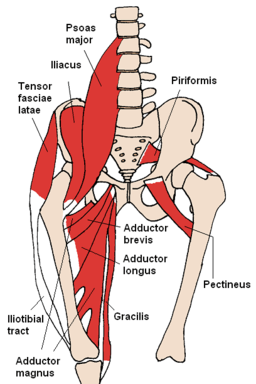
POP QUIZ: there are 10 of the 11 hip flexor muscles illustrated here. Which is missing? Answer at end of article.
There’s much more happening behind the scenes when the hip flexes! Learning the attachments of the 11 hip flexor muscles is the best way to begin getting a handle on what’s happening when personal training clients complain of tight hip flexors or seem to have referred back pain from an imbalance in the muscles. You’re then able to design and suggest stretches and exercises that are specific to the issue at hand when you understand the form and function of these muscles. Here’s a few thoughts for you when doing that…
Hip Flexor Stretches
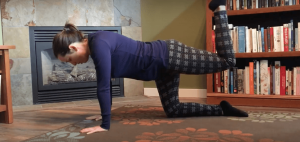
The hip flexors often get deemed as tight (but really, short is what we mean to say). You can stretch the hip flexors as a group by doing hip extension. This may not get to the root of the issue though. As we just learned, each hip flexor participates in the motion differently depending on the position of the femur. Carefully add internal or external rotation and abduction or adduction when extending the hip to stretch hip flexion. It’s a good place to start when wanting to create a more effective stretch.
Then, consider that where there is tightness there might also be weakness in an adjacent or opposing muscle. With 11 muscles contributing to the gross movement of hip flexion, it’s possible that some of the muscles are stronger than others. If some are stronger and work harder than others they might become overactive, manifesting in “tightness“. Identifying which hip flexors are weak and strengthening them is another way to approach hip flexor tightness.
Read Hip Flexor Stretches for Personal Trainers to get some fresh ideas.
Corrective Exercises for Hips
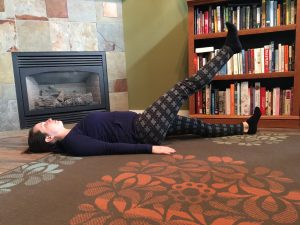
Once you know where each muscle attaches you can identify specific weakness by designing exercises that target a smaller group of muscles or positions instead of all of them at once. To know which ones are tight or weak strengthen your knowledge of the anatomy of hip flexion and function of the various muscles. Then, design exercises that target each muscle more independently to explore the strength of each one. This is often called corrective exercise.
You can add to your exercise library these Hip Flexor Exercises for Personal Trainers.
How do you know if your hips are out of alignment?
If a client reports soreness on one side of their hips more than the other, if they wear out one shoe more than the other or seem to be leaning when doing bilateral leg exercises there is likely misalignment in their hips. You, as the personal trainer, can identify this by paying close attention to their movements and performing postural assessments like the overhead squat assessment.
Then, do your best to help them become more balanced! Using corrective exercises is one way to explore muscle imbalances in the hips, these imbalances would cause them to be out of alignment. The bones are directed and connected by the muscles. They don’t get out of line on their own.
pop quiz answer: Sartorius!
Additional Article Reference
Biel, Andrew. 2014. Trail Guide to the Body. Boulder: Books of Discovery
Beverly Hosford, MA teaches anatomy and body awareness using a skeleton named Andy, balloons, play-doh, ribbons, guided visualizations, and corrective exercises. She is an instructor, author, and a business coach for fitness professionals. Learn how to help your clients sleep better with in Bev's NFPT Sleep Coach Program and dive deeper into anatomy in her NFPT Fundamentals of Anatomy Course.

